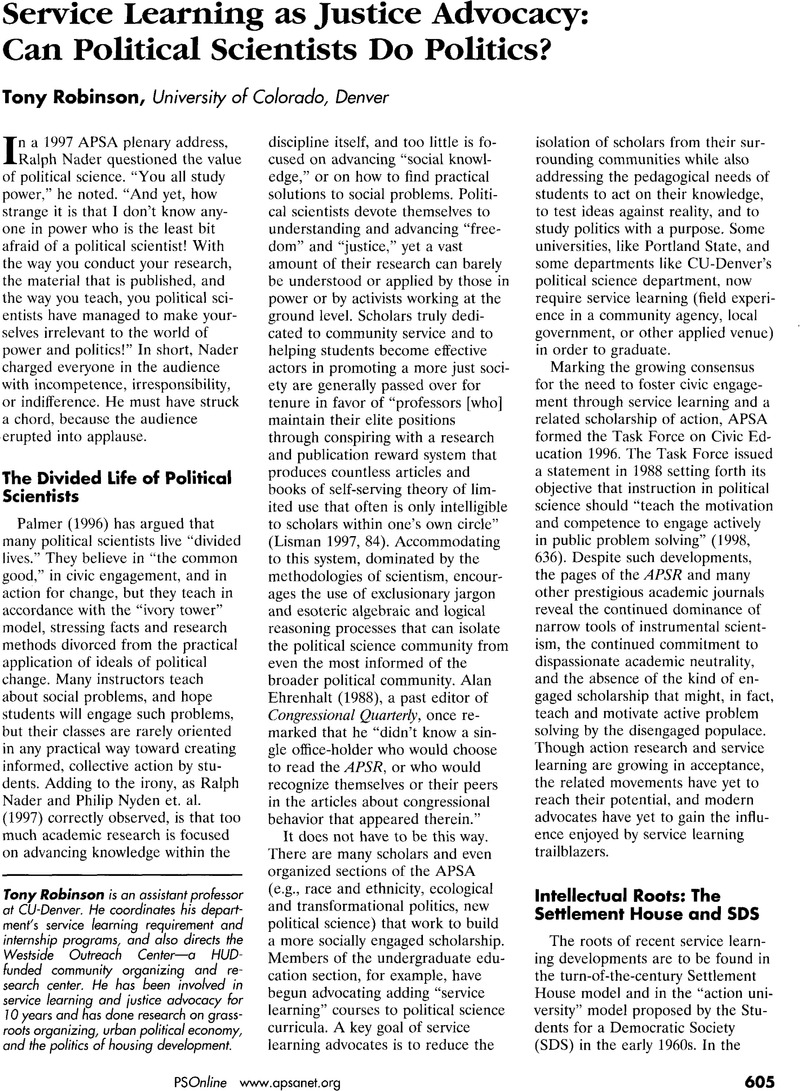Crossref Citations
This article has been cited by the following publications. This list is generated based on data provided by Crossref.
Ball, William J.
2005.
From Community Engagement to Political Engagement.
PS: Political Science & Politics,
Vol. 38,
Issue. 2,
p.
287.
Gorham, Eric
2005.
Service-Learning and Political Knowledge.
Journal of Political Science Education,
Vol. 1,
Issue. 3,
p.
345.
Freyss, Siegrun Fox
2006.
Learning Political Engagement from the Experts: Advocacy
Groups, Neighborhood Councils, and Constituency
Service.
PS: Political Science & Politics,
Vol. 39,
Issue. 1,
p.
137.
Smith, Elizabeth S.
2006.
Learning about Power through Service: Qualitative and Quantitative Assessments of a Service-Learning Approach to American Government.
Journal of Political Science Education,
Vol. 2,
Issue. 2,
p.
147.
Craig, John
2010.
Practitioner-Focused Degrees in Politics.
Journal of Political Science Education,
Vol. 6,
Issue. 4,
p.
391.
Connolly, Randy W.
2012.
Is there service in computing service learning?.
p.
337.
Allen, Mahalley D.
Parker, Sally A.
and
DeLorenzo, Teodora C.
2012.
Civic Engagement in the Community: Undergraduate Clinical Legal Education.
Journal of Political Science Education,
Vol. 8,
Issue. 1,
p.
35.
Smith, Andrew H.
2023.
Service-Learning at a Hispanic-Serving Institution: A Preliminary Study.
Journal of Political Science Education,
Vol. 19,
Issue. 1,
p.
91.
Welman, Lesley
2023.
The resurgence of service-learning as a social impact tool for youth confidence-building and learning: the untapped latent capital of the Saldanha area.
SN Social Sciences,
Vol. 3,
Issue. 2,



